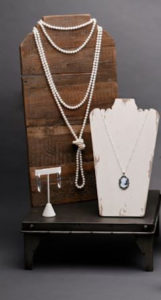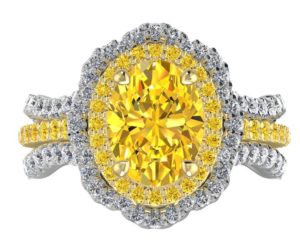Channeling Your Omni Message
The difference between being omni-channel and multi-channel is in your delivery of a cohesive, consistent message. To be omni-channel means more than operating on multiple platforms and devices in virtual and physical spaces. It means doing so with one voice in a way that provides a seamless, integrated shopping experience no matter the touch point.
 For 10 years consultant Andrea Hill with the Chicago-based Hill Management Group (known for StrategyWerx, SupportWerx, MentorWerx) has advocated for jewelers to adopt an omni-channel approach to their business and this year was the first time she says overwhelming number of retailers are reaching out to her not to gripe about her prodding, but rather to say they are now aggressively working to meet the challenge.
For 10 years consultant Andrea Hill with the Chicago-based Hill Management Group (known for StrategyWerx, SupportWerx, MentorWerx) has advocated for jewelers to adopt an omni-channel approach to their business and this year was the first time she says overwhelming number of retailers are reaching out to her not to gripe about her prodding, but rather to say they are now aggressively working to meet the challenge.
In fact, a recent Forrester Research study commissioned by ESKO and MediaBeacon reveals that 85% of brands surveyed across North America and Europe are investing more in omni-channel experiences in 2017.
Channel Surfing
You’ve got the tech side, the message, and store look and feel—from packaging, display and traditional advertising to website, ecommerce and social media engagement your brand image must be consistent across channels, says Hill.
Take advantage of proactive ways to name drop. Kristie Nicolosi, president & CEO, The Kingswood Company, Columbus, Ohio advocates a customized jewelry care line as a natural extension of a jeweler’s brand, a great add-on sale and gift with purchase. Imagine your name on products that your customers keep out on their bathroom counter or make-up table, even in their handbag. “Everyone’s jewelry gets dirty! Your customers are going to clean their jewelry, and they can either do so with a product from you, the jewelry expert, or another source. Eventually, your customer will run out and come back for more.” Retail consultant Kate Peterson, president of Performance Concepts, Montgomery Village, Maryland explains that all these touch points must work in tandem to help make you content contagious.
The most important step in developing your omni-channel messaging is to know who you are and what you want, and who your customers are and what they want. Know your target customers, beyond the demographic data like age, income and level of education. Dig deeper into lifestyles and behaviors to help sharpen your message and how you distribute it, advises Peterson. “Look to your best customers and ask them what they love about you? Find ways to make your message stand out with those who care about you. You don’t need to reach every one. To be successful today you must narrow down and stand out!”
and who your customers are and what they want. Know your target customers, beyond the demographic data like age, income and level of education. Dig deeper into lifestyles and behaviors to help sharpen your message and how you distribute it, advises Peterson. “Look to your best customers and ask them what they love about you? Find ways to make your message stand out with those who care about you. You don’t need to reach every one. To be successful today you must narrow down and stand out!”
Denise Cabrera, product manager, display and packaging for Rio Grande, a Richline brand based in Albuquerque, New Mexico describes two business approaches to branding—one that’s like a suit of armor, the other like an orange. “Some businesses look at their brand like armor. They polish the outside a beautiful mirror of silver and gold. They approach their interaction with customers as if they’re going to battle, to conquer. This may work temporarily, but the armor becomes heavy to maintain and tells you little about what’s inside. We look at branding more like an orange; you peel off the layers to expose the fruit inside. By building a brand around your core values and being transparent about them, maintaining your brand across multiple channels becomes easy.”
Vendor Partnerships
With digital technology rapidly changing, jewelers who want to compete today must have a compelling ecommerce platform. Many manufacturers have stepped up their digital offerings to help jewelers create a strong online presentation with virtual inventory and customizable options.
 To support an omni-channel approach, retailers benefit from working with vendor partners they can leverage on technology, inventory, images, content, and fulfillment to meet the quick response desire from consumers today, says Jay Gerber for the diamond jewelry manufacturer, WR Cobb, East Providence, Rhode Island.
To support an omni-channel approach, retailers benefit from working with vendor partners they can leverage on technology, inventory, images, content, and fulfillment to meet the quick response desire from consumers today, says Jay Gerber for the diamond jewelry manufacturer, WR Cobb, East Providence, Rhode Island.
Among the must haves in your omni-arsenal, Gerber cites a “Design Your Own” platform, as demand for customization is on the rise; and 3D imaging and diamond magnification capabilities, as customers like researching and examining styles and stones in a non-intimidating way online before going into a store.
Neil Shah of Shah Luxury, New York City concurs that the future for jewelers is in offering a custom experience. Since introducing custom design services and its “As You Wish” program, Shah reports business has more than tripled. “We say yes to almost everything. From altering existing styles to designing a piece from scratch, custom design allows jewelers to be the hero for their clients. Advances in CAD software allow us to create in 24 hours lifelike renderings that capture jewelry from every angle. Once approved, production takes 10-15 days.”
Jewelers must be omni-channel and have a mobile-responsive website. “People are communicating, researching and buying things on their phones for the convenience and immediacy,” says Gerber. “Your competition is not necessarily the jeweler down the street, but an online purveyor. All the touch points you can use to make things convenient, timely, informative, personal matter.”
buying things on their phones for the convenience and immediacy,” says Gerber. “Your competition is not necessarily the jeweler down the street, but an online purveyor. All the touch points you can use to make things convenient, timely, informative, personal matter.”







